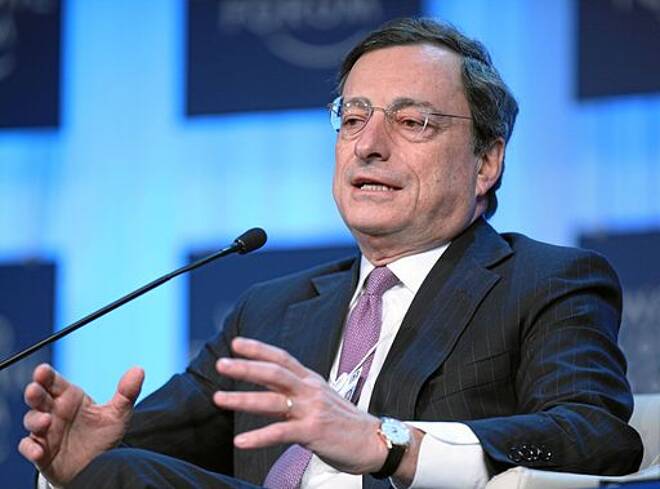Advertisement
Advertisement
ECB Decides Gradual Exit from QE is Best Move
By:
The EUR/USD may be moving lower because the extension of QE and the increased amount of stimulus is essentially bearish for the Euro. However, it is a necessary step in the process to avoid shocking the Euro Zone economy by exiting from stimulus too quickly.
The EUR/USD is posting a volatile reaction to the downside on Thursday after the European Central Bank revealed its plans to end its huge stimulus program by the end of the year. The price action suggests another “buy the rumor, sell the fact” event, although there is probably more too it. Since this is an on-going event, we’re going to take the liberty to clarify the central bank’s decision.
In outlining its plan to end the stimulus, the ECB also said it would extend its monthly purchases through the final quarter, but at a tapered pace.
The move by the ECB was no secret with rumors of the event seeping into the market over the past two weeks. This may be the reason for the sell-off. Based on the current 12 session rally, it looks as if the news had already been fully-priced into the market.
The whip-saw like price action first triggered buy stops above the recent top at 1.1841 before enough selling pressure hit the market to drive the EUR/USD through yesterday’s low at 1.1725. If the selling pressure continues then we could see a move into 1.1676 to 1.1636 before today’s close.
The event is breaking as of this writing at 1217 GMT and based on the price action, downside momentum continues to build. This is likely being fueled by the ECB’s attempt to explain how it would start preparing to end its stimulus. This assessment is based on recent comments from the ECB’s Peter Praet.
The price action could also be a result of position-squaring and adjusting as to the new specifications revealed by the ECB.
Suggested Articles
- FOMC Meeting Results in a Weaker US Dollar Against Majors, Global Stocks Lower
- Short Covering Boosts Gold Prices Ahead of ECB Meeting
- Under His Eye: It’s Time to Expose Our Privacy Terms
Currently, the quantitative easing (QE) program is scheduled to last until September and the bank purchases around 30 billion Euros or $35 billion of government and private debt every month. Traders had priced the Euro based on this information.
The price adjustments are being made because today’s announcement prolonged QE until December, but reduced to 15 billion Euros a month in the last quarter of the year. This is the ECB’s way of showing they want to make a gradual exit from QE.
The EUR/USD may be moving lower because the extension of QE and the increased amount of stimulus is essentially bearish for the Euro. However, it is a necessary step in the process to avoid shocking the Euro Zone economy by exiting from stimulus too quickly.
The easing from QE could also the result of the recent geopolitical turmoil in Italy and the spate of weaker economic data from the Euro Zone. If this is the reason for the gradual move then this would suggest there was a debate among ECB members where some favored exiting QE quickly while other voiced their opinions against it. The way the news was presented suggests a compromise had been reached.
About the Author
James Hyerczykauthor
James is a Florida-based technical analyst, market researcher, educator and trader with 35+ years of experience. He is an expert in the area of patterns, price and time analysis as it applies to futures, Forex, and stocks.
Did you find this article useful?
Latest news and analysis
Advertisement
